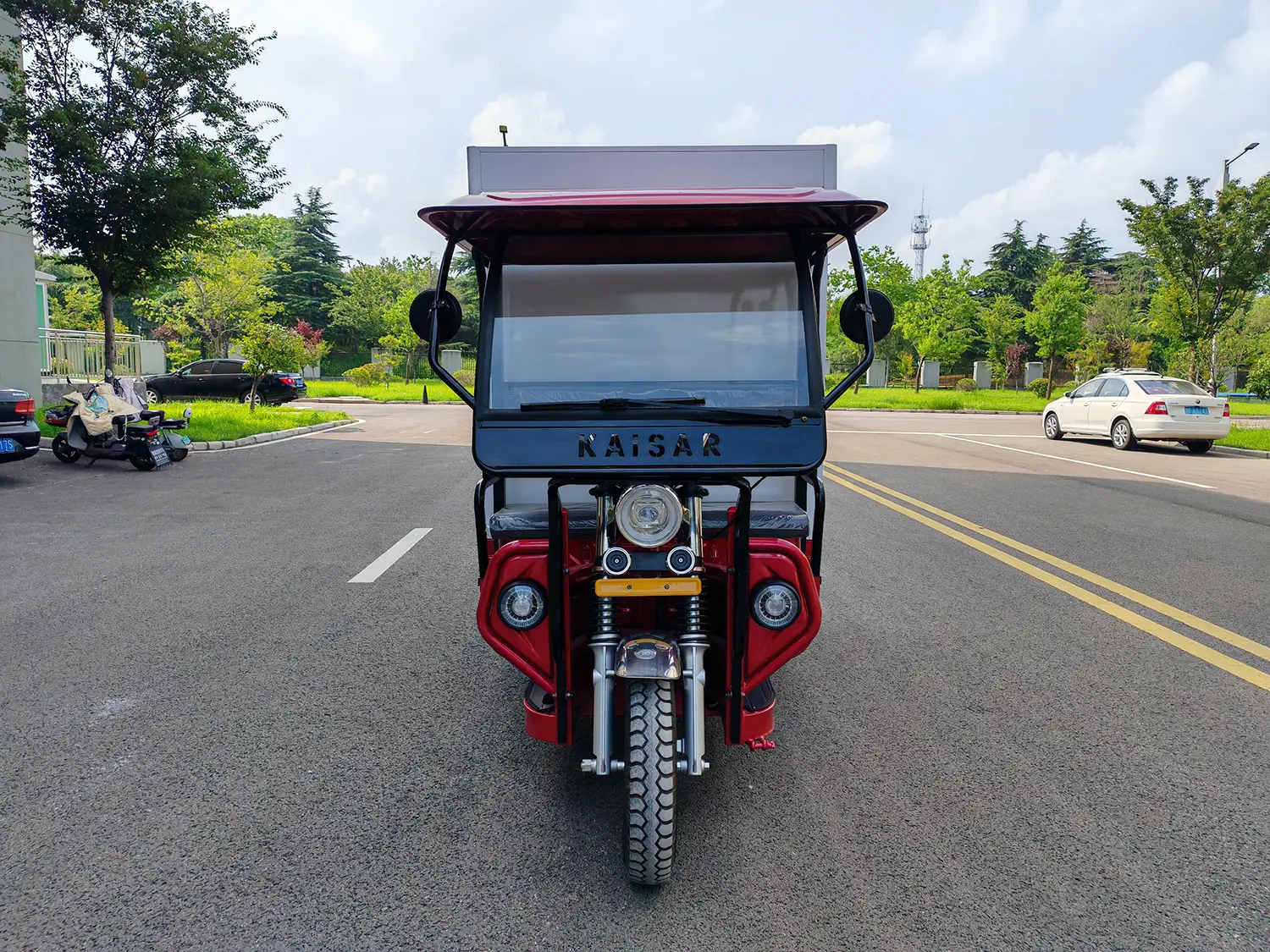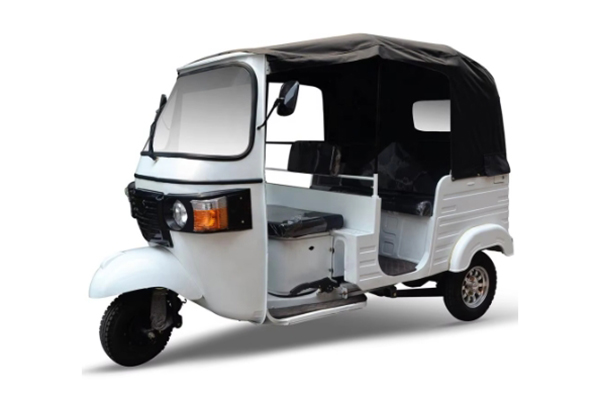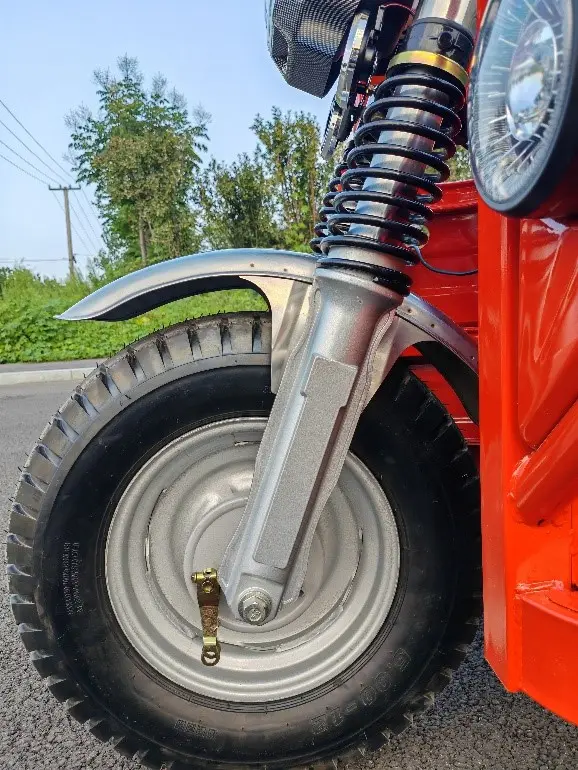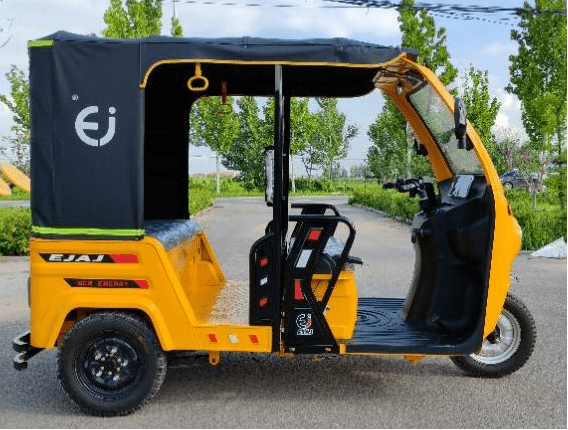Electric tricycles are rapidly changing the landscape of personal and commercial transportation. Offering stability, eco-friendliness, and impressive cargo or passenger capacity, these three-wheeled wonders are more than just a novelty. Whether you’re a fleet manager like Mark Thompson in the USA looking for reliable delivery vehicles, a small business owner needing efficient transport, or someone seeking a stable alternative to a traditional bicycle, understanding the electric tricycle market is key. This article delves into everything you need to know about electric tricycles, from powerful 750W motors and 48V battery systems providing ranges like 85 miles, to comfortable passenger seat options and essential safety features like robust brake systems and durable tires. Discover why an electric tricycle for adults might be the perfect solution for your needs and how to choose the right motor electric trike for ultimate efficiency and ultimate comfort.
What Exactly is an Electric Tricycle and Why Consider One?
At its core, an electric tricycle is a three-wheeled vehicle powered by an electric motor and battery, designed for either carrying cargo or transporting passengers. Unlike a traditional bicycle or even an electric bike, the tricycle design offers inherent stability, making it accessible to a wider range of users, including those who may not be comfortable balancing on two wheels. Think of it as a blend between the ease of an electric bicycle and the utility of a small vehicle. The addition of electric power assist makes riding effortless, even with heavy loads or on slight inclines.
Why consider an electric trike? The benefits are numerous. For businesses, they offer a cost-effective and environmentally friendly way to handle last-mile deliveries or short-distance transport. They navigate urban environments easily, often bypassing traffic congestion faced by larger vehicles. For personal use, an electric tricycle for adults provides a stable, comfortable, and fun way to get around, run errands, or simply enjoy the outdoors. The learning curve is minimal, and features like spacious baskets add practicality for everyday tasks. Compared to cars, they have lower running costs (electricity vs. fuel, reduced maintenance) and a smaller environmental footprint. The stability of 3 wheels is a major draw for many riders.
How Do Electric Cargo Tricycles Boost Logistics Efficiency?
In the world of logistics, especially "last-mile" delivery, efficiency is everything. This is where electric cargo tricycles truly shine. Imagine your delivery drivers navigating busy city streets with ease, bypassing traffic jams that hold up larger vans. That’s the advantage an electric cargo tricycle offers. These vehicles are specifically designed with durability and load capacity in mind, often featuring large rear basket areas or enclosed van-style boxes like the Van-type logistics electric tricycle HPX10. Their electric drive motor provides ample torque to handle substantial loads without the physical strain required by traditional cargo bikes.

Furthermore, the operating costs are significantly lower than conventional delivery vehicles. Charging a 48V battery is far cheaper than filling a gas tank, and maintenance is generally simpler due to fewer moving parts in the electric powertrain. Models like the heavy-duty Electric cargo tricycle HJ20 are built with robust frames and reliable components to withstand the demands of daily commercial use. This focus on durability translates to less downtime and a better return on investment for business owners like Mark, who prioritize reliable performance. The ability to maneuver through narrow streets and park easily further streamlines the delivery process, saving valuable time and boosting productivity. Some models even feature auto-unloading capabilities, further enhancing efficiency.
Are Electric Passenger Tricycles a Viable Transport Solution?
Absolutely! Electric passenger tricycles are emerging as a fantastic solution for short-distance transport, particularly in urban areas, tourist hotspots, and communities seeking accessible mobility options. These tricycles are designed with passenger comfort and safety as priorities. They typically feature comfortable seating, often with backrests and sometimes even seatbelt options, providing a secure and enjoyable riding experience for both the rider and the passenger. Models like the EV5 Electric passenger tricycle showcase designs that accommodate multiple passengers comfortably.

The stability of the tricycle platform makes it ideal for ride-sharing services in specific regions, campus transport, or mobility services for the elderly or those with balance issues. The electric assist ensures smooth acceleration and effortless travel, making the journey pleasant. Features often include adequate suspension systems (front suspension is common) to absorb bumps, reliable brake systems (often disc brakes), and clear displays showing speed and battery level. For tourism operators, an electric tricycle passenger electric tricycle offers a unique and eco-friendly way to provide tours. They are quiet, non-polluting, and allow passengers to enjoy the sights and sounds without the barrier of a car window.
Understanding Electric Tricycle Motors: What Does 750W Power Mean for Performance?
The motor is the heart of any electric tricycle, providing the power that makes riding effortless. You’ll often see motor power rated in watts (W), with 750W being a common and robust option for many electric tricycle for adults models. But what does this number actually mean for performance? A 750W motor, often a brushless hub motor located in the rear motor assembly or sometimes the front hub, delivers significant torque. This translates to quicker acceleration, better hill-climbing ability, and the capacity to carry heavier loads (cargo or passengers) without struggling.
A 750 watt motor generally allows the electric trike to reach top speed limits suitable for urban commuting, often around 20mph, though this can be governed by local regulations. It provides a noticeable boost, especially when using the throttle or engaging the pedal assist system. While lower wattage motors (like 250W) are sufficient for flatter areas and lighter loads, a 750W rear drive motor offers more versatility and confidence, especially in varied terrain or demanding commercial applications. It’s important to match the motor power to your intended use. For heavy cargo or frequent passenger transport, a higher wattage motor like a 750W unit is usually recommended for optimal performance and motor longevity. Some specialized tricycles might even employ different drive motor configurations.
Battery Breakdown: Exploring 48V Systems, Range (like 85 miles), and Charging?
The battery is the fuel tank of your electric tricycle, determining how far you can travel on a single charge (range) and influencing overall performance. Many modern electric trikes utilize a 48V system, which offers a good balance of power and efficiency compared to lower voltage systems (like 24V). A common battery capacity paired with this voltage is 20Ah (48V 20Ah), providing substantial energy storage. This combination is key to achieving impressive ranges; some high-end configurations with efficient motors and potentially dual battery setups can even claim ranges approaching 85 miles or theoretically even 130 miles under ideal conditions, though real-world range depends heavily on factors like terrain, load, speed, and assist level used.
You’ll typically encounter two main battery chemistries:
- Lead Acid Battery: A more traditional, heavier, and generally less expensive option. They have a shorter lifespan and lower energy density compared to lithium-ion.
- Lithium-ion: Lighter, more energy-dense (meaning more range for the same weight/size), and offering a longer overall lifespan. While initially more expensive, they often provide better long-term value. Many modern tricycles feature removable battery packs (e.g., 13Ah or 20Ah lithium-ion) for convenient charging indoors.
Charging typically involves plugging the battery (either on or off the tricycle) into a standard wall outlet using the provided charger. Charging times vary depending on the battery capacity and charger output, usually taking several hours for a full charge. Understanding your range needs and choosing the appropriate battery capacity (48V 20Ah being a solid choice for many) is crucial for a satisfying ownership experience. Look for UL certified batteries for assurance of safety standards.
| Feature | Lead Acid Battery | Lithium-ion Battery (e.g., 48V 20Ah) |
|---|---|---|
| Weight | Heavier | Lighter |
| Energy Density | Lower | Higher (More range for size/weight) |
| Lifespan | Shorter (Fewer charge cycles) | Longer (More charge cycles) |
| Cost | Lower upfront cost | Higher upfront cost |
| Maintenance | May require some maintenance | Generally maintenance-free |
| Common Use | Older or budget models | Most modern electric tricycles |
What Key Features Ensure Safety and Comfort on an Electric Trike?
Safety and comfort are paramount, whether you’re using an electric tricycle for work or leisure. Manufacturers incorporate several features to enhance both.
Safety Features:
- Braking System: Reliable stopping power is critical. Look for robust brake systems. Disc brakes (hydraulic disc brakes or mechanical disc brakes) offer superior performance, especially in wet conditions, compared to older drum brakes. Many tricycles feature brakes on both front and rear wheels. A parking brake system is also essential for preventing the etrike from rolling when stationary, particularly on slopes.
- Tires: The right tires provide stability and traction. Fat tires are increasingly popular on some models, offering excellent grip and cushioning on various surfaces, including uneven terrain. Standard tire sizes (like 16 inch or larger) should be durable and appropriate for the intended load.
- Lighting: Integrated headlights, taillights, and brake lights are crucial for visibility, especially when riding at night or in poor weather conditions.
- Frame & Build Quality: A sturdy, well-constructed frame ensures durability and rider safety.
- Seatbelt: Some passenger models include a seatbelt for added security.
Comfort Features:
- Suspension: A good suspension system, often featuring a front suspension fork, smooths out bumps for a more comfortable riding experience. Some models also have rear suspension elements.
- Seating: Comfortable seating is key, especially for longer rides. Look for well-padded saddles, often adjustable, sometimes with a supportive backrest. Passenger seat designs should also prioritize comfort. Ultimate comfort is a goal for many manufacturers.
- Handlebars: Adjustable handlebars allow riders of different sizes to find a comfortable riding position. Cruiser style handlebars are common for an upright posture.
- Step-Thru Frame: Many electric tricycles feature a step-thru frame design, making it easy to mount and dismount.
- Throttle & Pedal Assist: Having both throttle (for power on demand) and pedal assist (providing power assist as you pedal at different speeds, often managed by systems like a Shimano 7-speed shifter) allows riders to choose how much effort they want to exert. An LCD display often shows speed, battery level, and assist level.

This is a critical area, especially for business buyers like Mark Thompson importing electric tricycles into countries like the USA. Regulations for electric vehicles, including tricycles, can vary significantly by state and locality. Key areas to understand include:
- Classification: Is the electric trike classified as an electric bicycle, a moped, or another vehicle type? This affects licensing, registration, and insurance requirements. Many jurisdictions have specific definitions based on motor power (e.g., limits like 750W), maximum speed (e.g., 20mph on motor power alone), and the presence of functional pedals.
- Safety Standards: Does the tricycle meet required safety standards (e.g., CPSC for electric bicycles in the USA, UL certified components)? This includes requirements for lighting, brakes, and reflectors. Compliance is crucial for legal operation and user safety.
- Road Access: Where can the electric tricycle be legally ridden? Are they allowed on roads, bike lanes, or sidewalks? Restrictions often depend on the vehicle’s classification and local ordinances.
- Import Regulations: Importing electric vehicles involves customs duties, tariffs, and ensuring compliance with import documentation and safety certifications (e.g., DOT requirements if classified as a motor vehicle). Working with a knowledgeable supplier who understands export requirements is vital.
As a buyer, particularly for fleet purchases, it’s essential to research the specific regulations in your area of operation. Partnering with a manufacturer experienced in exporting to your target market (like the USA, North America, or Europe) can alleviate many headaches. They should be able to provide documentation certifying compliance with relevant standards and offer guidance on classification. Ignoring regulations can lead to fines, impoundment, or inability to legally use the purchased tricycles.
How Important is After-Sales Support and Spare Parts Availability?
For any vehicle, especially one used for business, reliable after-sales support and easy access to spare parts are absolutely crucial. This is often a major pain point for buyers purchasing from overseas – the fear of inconsistent quality or being left without support if something goes wrong. A reputable electric tricycle factory understands this and prioritizes long-term customer satisfaction.

Key aspects of good after-sales support include:
- Warranty: A clear warranty policy covering the frame, motor, battery, and other major components.
- Technical Assistance: Access to knowledgeable technicians who can help diagnose issues remotely or provide guidance for local repairs.
- Spare Parts: The manufacturer should maintain a stock of common spare parts (like tires, brake pads, controllers, battery packs) and have a system for shipping them efficiently to international customers. Knowing you can get parts for your 750w rear mount motor electric tricycle or its specific 48v 20ah battery brings peace of mind.
- Manuals and Documentation: Providing comprehensive user manuals and service guides.
Before purchasing, especially a bulk order, inquire directly about the supplier’s after-sales support structure and spare parts availability for your specific region. Ask about lead time for common parts. A supplier committed to long-term partnerships, like us at Allen’s factory, understands that reliable support builds trust and ensures the continued successful operation of your electric tricycle fleet. This is far more valuable than just a low initial price.
Finding the Right Supplier: Tips for Sourcing Quality Electric Tricycles
Choosing the right supplier is arguably the most critical step in purchasing electric tricycles, especially for B2B buyers needing reliability and consistency. Mark Thompson’s approach of using exhibitions and Google searches is common, but here’s how to refine the process:
- Look for Specialists: Partner with a factory that specializes in electric tricycles, not just general trading companies. A dedicated manufacturer like Zhiyun (autotrikes.com) has in-depth knowledge, multiple production lines, and better control over quality.
- Verify Experience and Exports: Choose a supplier with proven experience exporting to your target market (USA, Europe, etc.). They will be familiar with relevant regulations, standards (like UL certified components), and shipping logistics.
- Assess Product Range and Customization: Do they offer a range that meets your needs (cargo, passenger, specific load capacities)? Can they offer customization options for larger orders? Check out diverse offerings like the practical Electric cargo carrier tricycle HP10 or passenger models.
- Inquire About Quality Control: Ask about their quality control processes throughout manufacturing. What components do they use (motor brands, battery cell suppliers)? Consistent quality across batches is a key concern for fleet managers.
- Discuss After-Sales Support: As discussed previously, confirm their warranty, technical support, and spare parts availability before placing an order.
- Communication and Transparency: Choose a supplier who communicates clearly and transparently. Are they responsive to inquiries? Do they provide detailed specifications?
- Visit or Audit (If Possible): For significant orders, visiting the factory or arranging a third-party audit can provide valuable insights into their operations and capabilities. Attending industry exhibitions is also a great way to meet suppliers face-to-face.
- Consider Lead Time and Payment: Understand the production lead time and discuss secure payment methods.
Finding a supplier isn’t just about the lowest price (though competitive pricing is important). It’s about finding a reliable partner who delivers quality products and stands behind them. Look beyond basic listings like "product on alibaba.com" and delve deeper into the supplier’s credentials.
Customer Reviews and Lead Time: What to Expect When You Buy Electric?
Understanding customer reviews and production lead time helps set realistic expectations when you decide to buy electric tricycles, particularly from an overseas factory. While direct online customer reviews for B2B transactions might be less common than for consumer products, you can gauge reputation through case studies, testimonials provided by the supplier (ask for references if possible), and their track record in the industry and specific export markets. Look for feedback related to product durability, battery performance consistency, and the supplier’s responsiveness – addressing the key concerns of buyers like Mark.
Lead time refers to the period between placing an order and the goods being ready for shipment. This can vary significantly based on:
- Order Volume: Larger orders naturally take longer to produce.
- Customization: Requests for specific modifications add to the production timeline.
- Component Availability: Supply chain fluctuations can occasionally impact lead times.
- Factory Capacity: The supplier’s current production schedule plays a role.
It’s crucial to get a clear estimate of the lead time from your supplier during the negotiation phase. Typical lead times for electric tricycle manufacturing can range from 30 to 90 days, depending on the factors above. Remember to also factor in shipping time, which can add several weeks depending on the destination and shipping method. Clear communication with your supplier about timelines is essential for planning your own operations or distribution schedule. A reliable factory will provide realistic estimates and keep you informed of progress.
Key Takeaways:
- Versatility: Electric tricycles offer stable, eco-friendly solutions for both cargo logistics and passenger transport.
- Performance: Motor power (like 750W) and battery systems (48V 20Ah common) dictate performance, range (up to 85 miles or more), and load capacity.
- Safety & Comfort: Look for features like reliable brakes (disc brakes, parking brake system), good tires (fat tires optional), suspension, comfortable seating, and lighting.
- Regulations: Understanding local laws regarding classification, safety standards, and road access for your electric trike is crucial, especially when importing.
- Supplier Choice: Partner with specialized manufacturers with export experience, strong quality control, and reliable after-sales support/spare parts availability.
- Key Components: Pay attention to the quality of the motor, battery (consider lithium-ion for longevity, possibly removable battery), frame, and brakes.
- Practicality: Features like baskets, step-thru frames, and adjustable components enhance usability for both personal and commercial tricycle users.
Choosing the right electric tricycle involves balancing features, performance, cost, and supplier reliability. By considering these points, you can make an informed decision and leverage the many benefits these innovative vehicles offer.
Post time: 04-07-2025




